Arabs have been emigrating to France since some returned from Egypt with the remnants of Napoleon’s Grande Armée in 1801, but most first generation émigrés arrived in the ’60’s and ’70’s as an outcome of the Algerian conflict.
Today, Arabs are now France’s largest non-European immigrant group, and nearly half of the nation’s Arab population lives in and around Paris.
The Grande Mosquée de Paris – the Paris Grand Mosque – was completed and dedicated in 1926 as a token of gratitude to Muslim tirailleurs from French Africa, among whom more than 100,000 died fighting against Germany during World War I.
The mosque’s earliest worshippers were Berbers from Algeria, but its construction was first promoted by the king of Morocco, and its design in the mudéjar style mimics that of mosques from Marrakesh to Seville.
The mosque serves not only as a place where Muslims can come together for salat – prayer – but also as a center for information, education, and conflict mediation.
The compound covers more than two acres, and at one end is a courtyard decorated with mosaics, wood carvings and wrought iron brought from Morocco. The minaret towers more than 100 feet above the complex.
The Mosque has a surprising and little known history.
During the German occupation in World War II, the mosque’s imam operated it as a secret refuge and way station for Algerian and European Jews.
He provided them with forged Muslim birth certificates and arranged for safe passage, and even had stonecutters carve false gravestone for Jews who had been given new identities.
Many Jewish children were given refuge in Muslim clinics outside Paris which also hid downed Allied airmen and paratroopers. The Nazis, unwilling to risk an insurrection among Muslims in North Africa, never challenged the imam.
At one end of the Grand Mosque compound are fountains and gardens that recall Granada’s Alhambra.
At the opposite end, the walls of a courtyard are covered in intricate Andalusian mosaics, and trimmed in dark eucalyptus and cedar.
Elaborately carved ceilings and arches soar above walls inscribed with Quranic verses in delicate calligraphy that both supports worship and serves as a decorative element.
There are no angelic statues or stained glass saints here; Islam considers such human images to be idolatrous.
The entire place is wrapped in striking serenity.
Five times daily, the muezzin calls the faithful to prayer from the minaret, and five times daily the imam leads the congregation in prayer.
Muslims precede all prayers with a ritual purification, which is why an ablution fountain is provided.
Shoes are disallowed in the musallah – the prayer hall – and racks at the entryways are stacked with shoes.
The great dome above the hall signifies the vault of heaven. The hall has no pews or other furniture; worshippers alternately stand and kneel.
The Paris mosque features a marble Turkish bath that’s open to women two days weekly. In winter it attracts many neighborhood residents.
There’s a restaurant in the mosque adjoining the courtyard, where it’s not unusual to see students from nearby universities gather for couscous and sweet mint tea.
After an afternoon of immersion in the mosque, a meal at a Moroccan restaurant seems like a fitting end to the day, and Restaurant Le Méchoui du Prince – located a block from the Odeon – fits the bill admirably.
Visitors are welcome to the mosque and guided tours are available.
To reach it, take the Metro to the Place Monge stop and walk about four blocks, or walk less than two kilometers from Notre Dame and take in more of the city along the way. Consider an along-the-way stop at the Pantheon or a visit to the botanical gardens just across the Rue Linne.





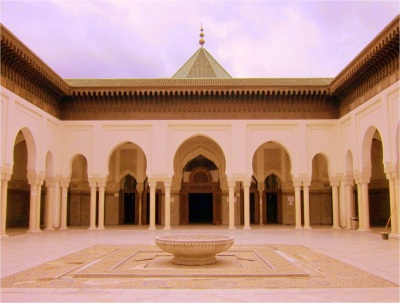
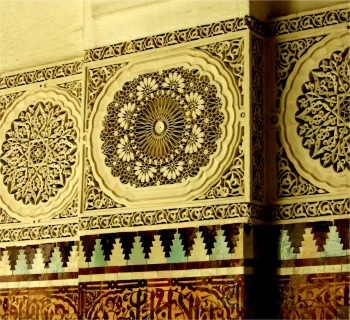

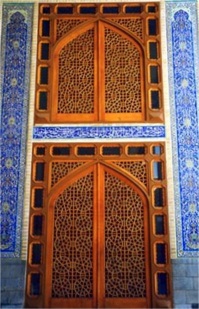
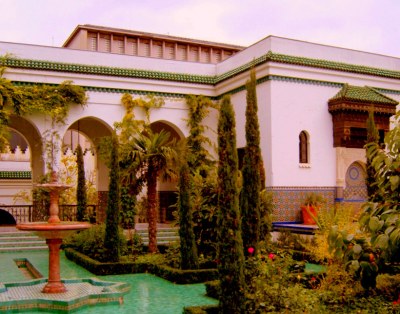
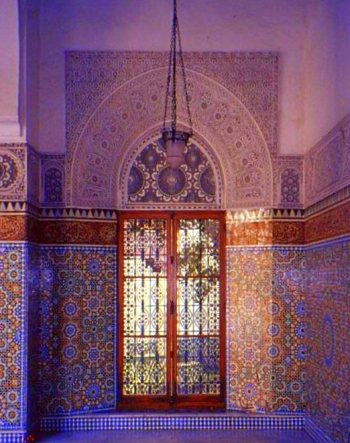


This is wonderful to read something positive about an imam and Islam in general. I wish it was generally known that this imam offered comfort and safety to Jews during World War 2.
Good piece! A lot of stuff I didn’t know.